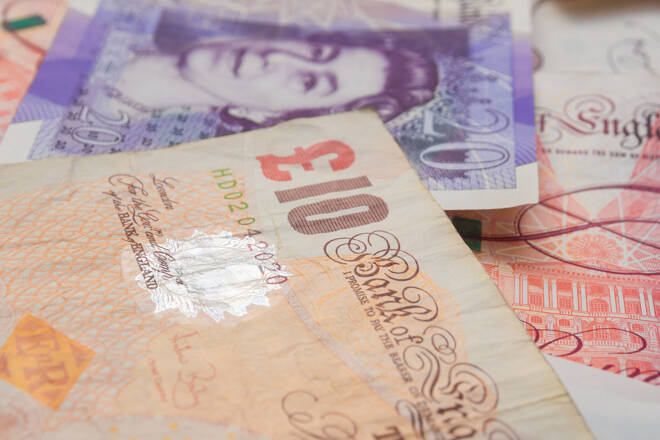Advertisement
Advertisement
GBP/USD Price Forecast: A Run at $1.21 in the Hands of Governor Bailey
By:
GBP/USD found early support, though wage growth and claimant counts raise BoE monetary policy uncertainty ahead of inflation numbers on Wednesday.
In this article:
It was a busy morning for the Pound, with employment figures providing early direction.
In May, average earnings + bonus rose by 6.2% versus a forecasted 6.7%. Wages plus bonuses rose by 6.8% in April. Average earnings ex-bonus rose by 4.3%, up from 4.2% in April.
Labor market conditions held steady in May, with the unemployment rate unchanged at 3.8% versus a forecasted increase to 3.9%. However, the claimant counts disappointed. In June, claimant counts fell by 20k versus a forecasted 41.2k decline. Claimant counts fell by 34.7k in May.
The wage growth figures were material. Bank of England Monetary Policy members view wage growth as one of two key factors to drive monetary policy decisions over the near term.
In June, Bank of England Chief Economist Huw Pill warned that the BoE would raise interest rates more aggressively to curb soaring inflation if there were signs of a wage-price spiral taking hold or if companies continued to raise their prices.
Talking to Bloomberg TV, Pill said,
“If we see greater evidence that the current high level of inflation is becoming embedded in pricing behavior by firms, in wage-setting behavior by firms and workers, then that will be the trigger for this more aggressive action.”
Later today, Bank of England Governor Andrew Bailey is due to speak at the Mansion House Financial and Professions Services Dinner (4pm BST). Governor speeches at Mansion House have drawn plenty of interest in the past, with the markets looking for views on the economy and forward guidance on interest rates.
GBP/USD Price Action
At the time of writing, the Pound was up 0.18% to $1.19693.
This morning, the Pound fell to an early low of $1.19252 before rising to a high of $1.19720.
Technical Indicators
The Pound needs to avoid the $1.1948 pivot to target the First Major Resistance Level (R1) at $1.2034.
A pickup in risk appetite would support a breakout from the Monday high of $1.20336 ahead of Governor Bailey’s speech.
An extended rally would test resistance at $1.21 and the Second Major Resistance Level (R2) at $1.2119. The Third Major Resistance Level (R3) sits at $1.2290.
A fall through the pivot would bring the First Major Support Level (S1) at $1.1863 into play.
Barring an extended sell-off, the Pound should steer clear of sub-$1.18 and the Second Major Support Level (S2) at $1.1777. The Third Major Support Level (S3) sits at $1.1606.
Looking at the EMAs and the 4-hourly candlestick chart (below), it is a bearish signal.
At the time of writing, the Pound sat above 50-day EMA, currently at $1.19281.
The 50-day EMA narrowed to the 100-day EMA, with the 100-day EMA flattening on the 200-day EMA, which were GBP/USD negatives.
A hold above the 50-day EMA would support a move through the 100-day EMA, currently at $1.20046, to bring R1 into play.
The US Session
It is another quiet day ahead on the US economic calendar. Housing sector data, including building permits and housing starts, are in focus later today. However, we don’t expect the numbers to influence the EUR/USD.
About the Author
Bob Masonauthor
With over 20 years of experience in the finance industry, Bob has been managing regional teams across Europe and Asia and focusing on analytics across both corporate and financial institutions. Currently he is covering developments relating to the financial markets, including currencies, commodities, alternative asset classes, and global equities.
Latest news and analysis
Advertisement
